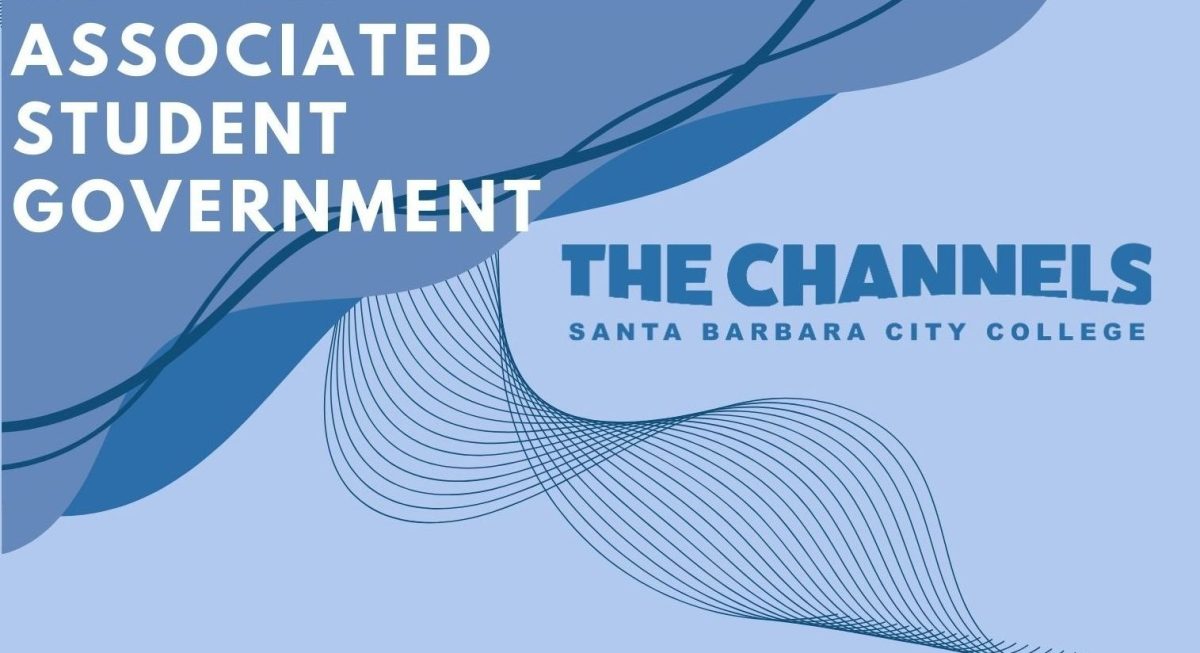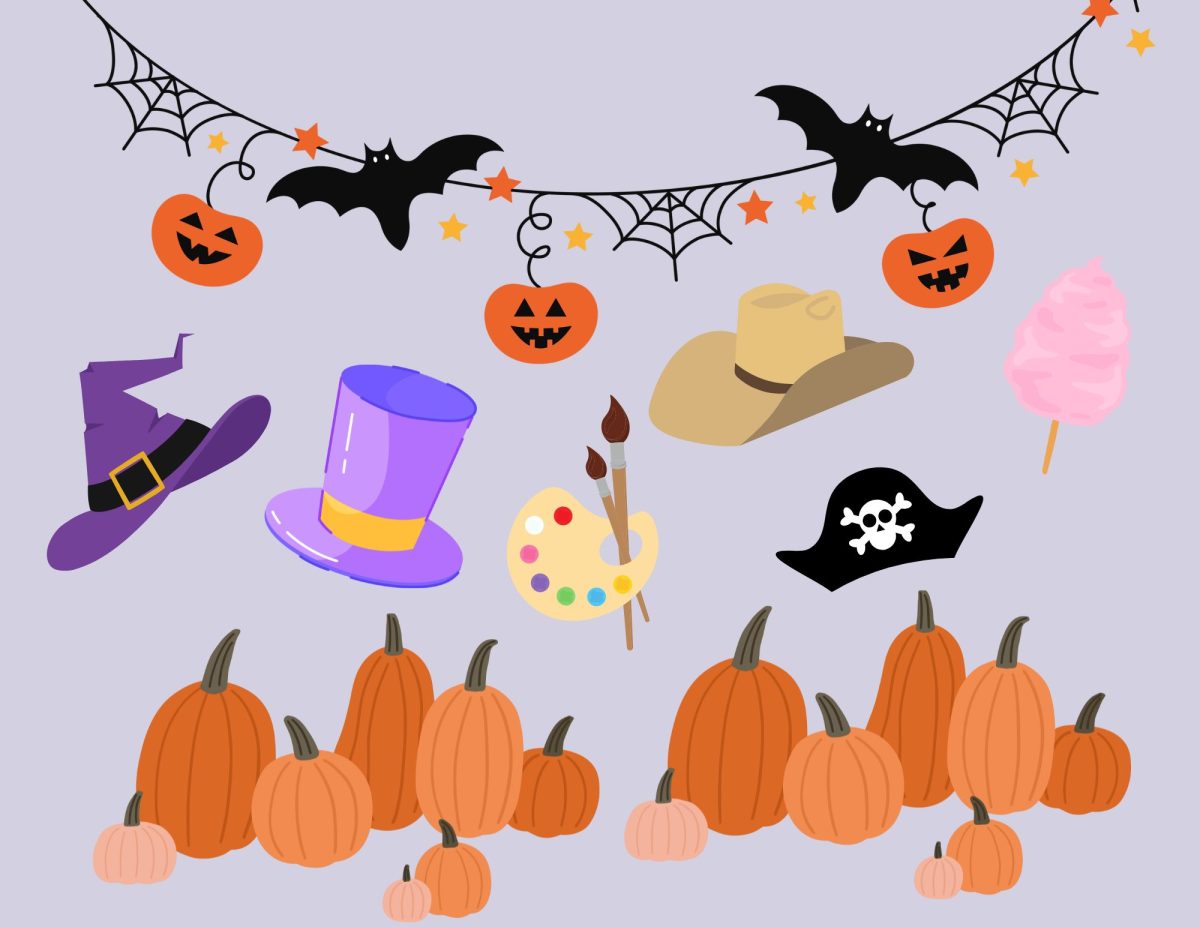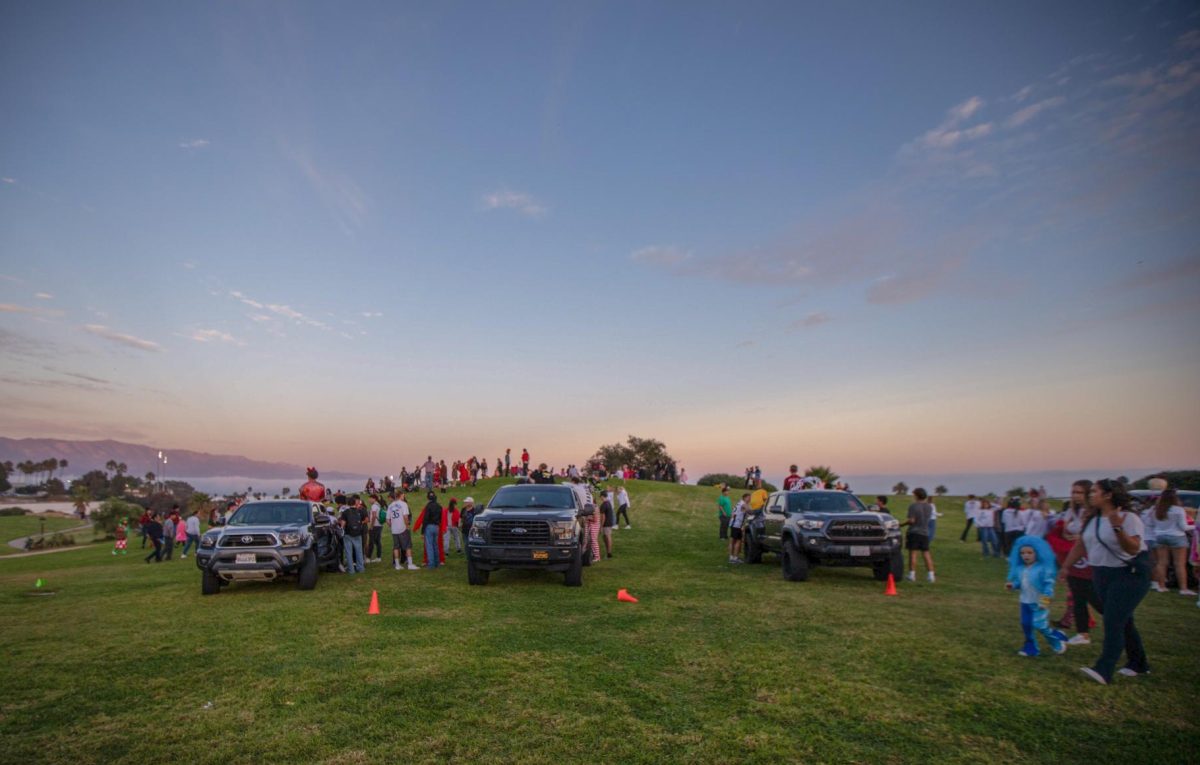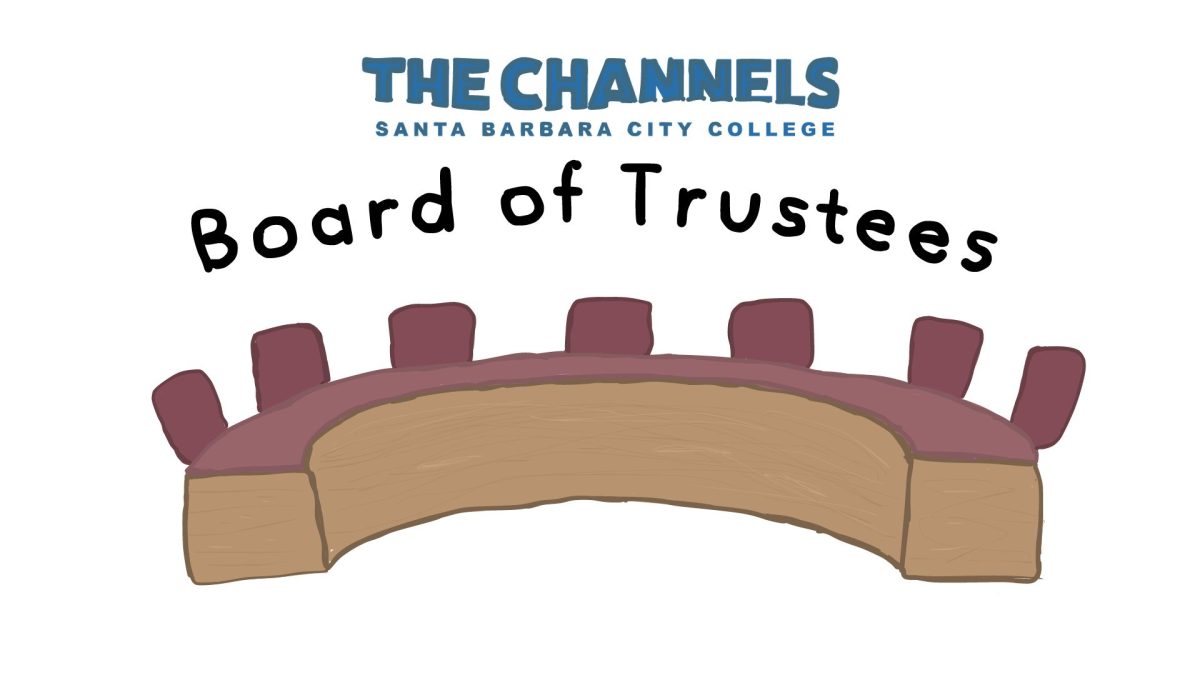A man lies face down in a pool of blood on the dust-covered, black and white checkered linoleum floor of a classroom. The murmur of voices fades in and out through an open window as unsuspecting students pass by.
Nine students enter into the stale air of the classroom. They see the body, a gun, and a streak of blood radiating up the stark white wall.
Then they begin to investigate.
By analyzing the physical evidence, blood patterns and ballistics, these nine students will attempt to deduce what happened in this mock crime scene as part of Administration of Justice 110, “Introduction to Forensics.”
The professor of the class, Mike Ullemeyer, is the senior forensics technician at the Santa Barbara Police Department.
He said as a crime-scene investigator he spends his days, and sometimes nights, gathering and analyzing evidence that will put criminals in jail and make Santa Barbara a safer place to live.
And he is passionate about doing it. “I am fascinated with the kind of things that can be done with fingerprints and blood evidence, and just putting puzzle pieces together and helping solve a crime,” he said.
A self-proclaimed “forensic lab geek guy,” Ullemeyer has a physique that projects the opposite image. He is a 6-foot-6-inch, athletic man with short reddish-brown hair, a defined jaw line, symmetric facial features and a slight tan from sailing. His looks have earned him a hot pepper on RateMyProfessors.com.
He has been working in forensics for more than 22 years.
“Too long,” he said with a laugh, adding, “But I wish I would have gotten into it sooner.”
Ullemeyer started his career as a photographer, but after landing a job processing film for the crime lab at the Santa Barbara Sheriff’s Department he became interested in forensics.
While continuing to work at the Sheriff’s Department, Ullemeyer took classes in forensic science and began working as a crime-scene investigator.
Early in his career, he experienced the harsher side of crime-scene investigation. It happened when he went out to recover the body of a woman buried in a shallow grave in Riverside.
“Here’s this rotting corpse, doesn’t even look female. It’s just this blob of flesh and bones and bugs and smell,” he said. “I’m thinking, ‘Well this, I have to get used to this.'”
And he did. He said he also discovered that using science to identify a criminal and solve a case was both exciting and rewarding. Twelve years ago he moved to the crime lab at the Santa Barbara Police Department.
When not on-site at a crime scene or in court testifying as expert witnesses, Ullemeyer and Mike Schwab, his work partner of more than 10 years, analyze fingerprints and other physical evidence in the windowless 10-by-30 laboratory at the department.
Schwab said they work well together and compliment each other’s personalities.
At any given time, the two Mikes are analyzing evidence from about a dozen cases. The crimes run the gamut, from homicides, gang stabbings and rape to burglaries and forgeries.
Dianne Burns, senior criminalist at the California Department of Justice in Santa Barbara, receives and examines the biological evidence from the cases. “Mike is fun, easy to get along with and very professional,” she said.
Ullemeyer also brings his passion for forensics into the classroom. In his class, Ullemeyer takes the students through cases he investigated by showing photographs of the crime scene, and explaining how the forensics team went about processing the scene.
If the case is a homicide, he shows images of the dead body. He said he does so not to shock the students, but to show them what they might see at a real crime scene.
“Mike really puts in the effort to get the students into the experience of being a forensic scientist, right down to a human body on the floor of the mock crime scene,” said Eric Holder, his friend, sailing buddy and one-time mock crime-scene victim.
The class culminates with the processing of the mock crime scene, where the students apply what they learned during the semester to try to solve a case.
During this investigation, the students in his class can imagine that they are real life crime-scene investigators, and perhaps even feel the satisfaction that Ullemeyer does when solving a homicide case.
-Allison Jones is a Journalism 271 student







